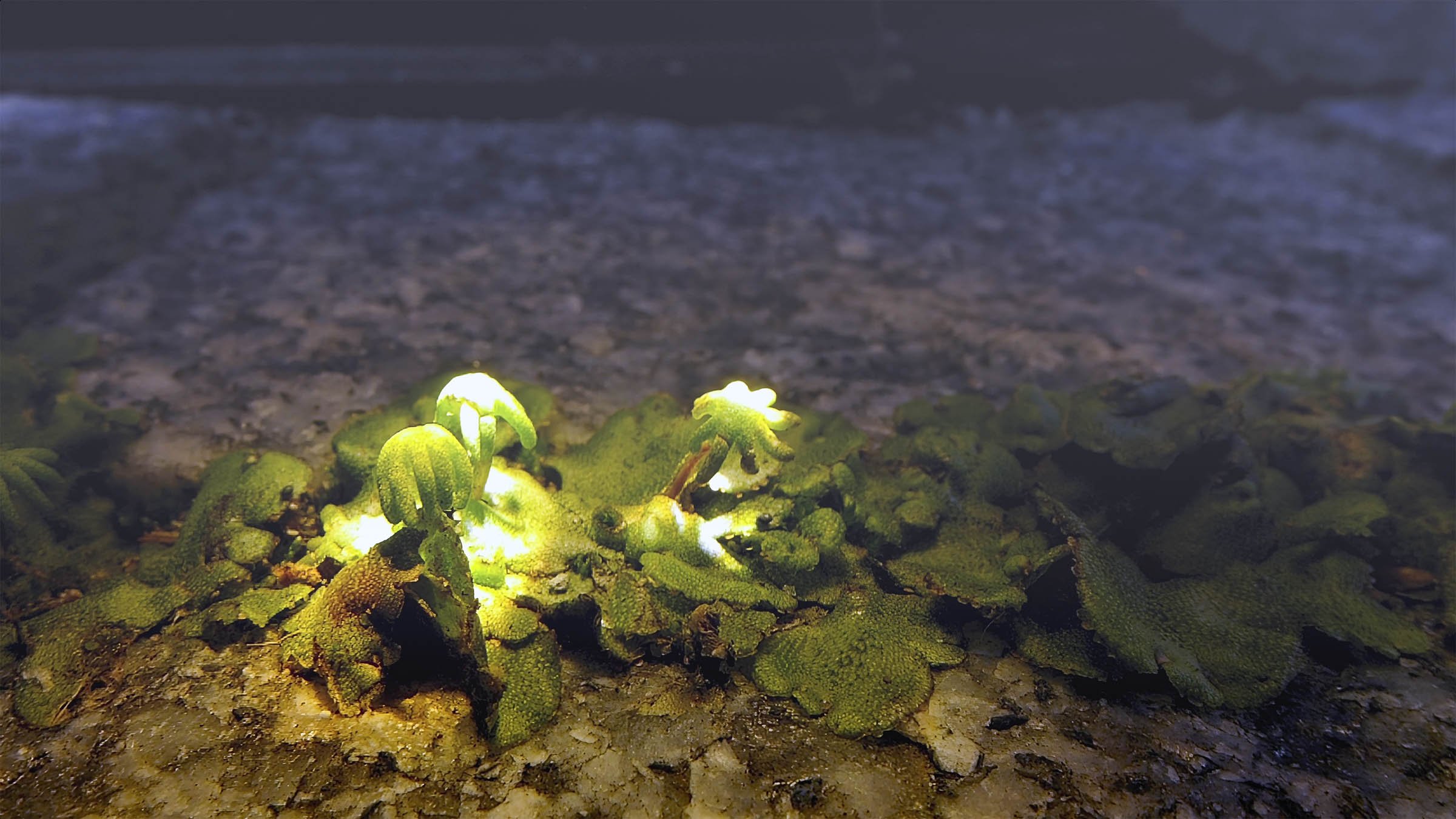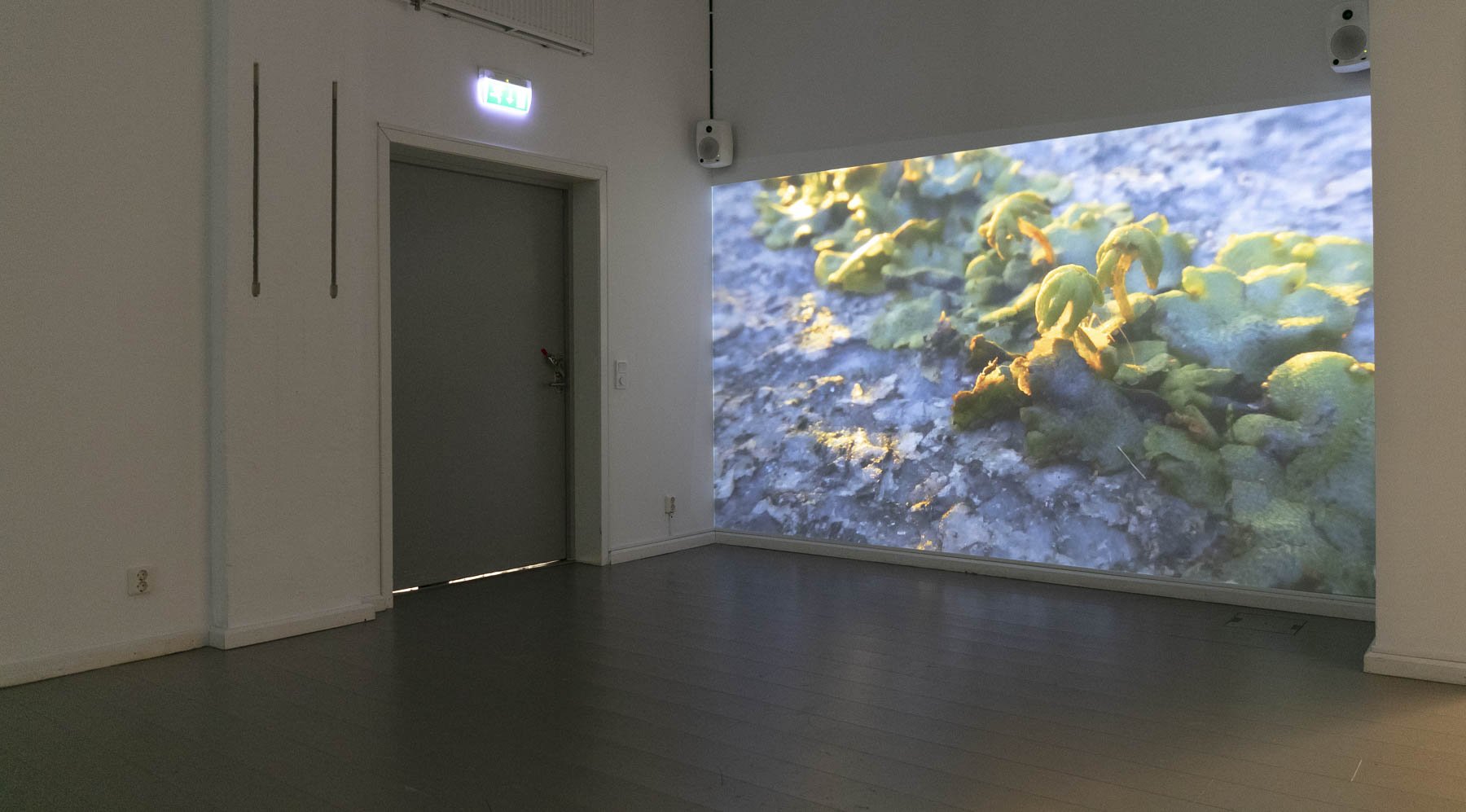
Concealed Sceneries of New York
4K-video, 2.1 audio, 7min loop, 2024
on view at Östermalmhallen until 20 June 2025!
Location: Nybrogatan 31, Stockholm
in the Villa Dagmar passage next to elevator/wc near Lisa Elmqvist
Thanks to Stockholms City, Lisa Elmqvist and Östermalmshallen!
Curator: ART.27 Gunilla Hedén. Contact: Erik Hultberg.
ABOUT THE FILM:
“Concealed Sceneries of New York”
4K-video, 2.1 audio, 7min loop, 2024
In this art video we discover the often overlooked moss and lichen that slowly colonize our urban spaces from a new perspective. This film on urban biodiversity is part of the larger project Urban Microhabitats by artist Oscar Furbacken, rethinking our perception of nature in the growing cities of our time.
The material for this specific video was filmed in June 2023 in the world’s first megacity, New York. There is a shift of scale so even if the pulse of street life sometimes flickers in the background the specific location of the shoots often remains a mystery. The artist uses macro-optics, miniature jibs and a specialized light-equipment. The shots are rather documentary except for some atmospheric filters and slow motion tweaks, added in post production while weaving the material into a peculiar and subtle storyline. The sound scape has been developed in collaboration with composer and sound designer Robin af Ekenstam.
This film project was made possible thanks to the Carl-Axel Valén travel grant which Furbacken was awarded 2021.
During autumn 2024 this film was on view in the exhibition “The Romantic Eye” at the Swedish National Museum!, The exhibition curator Carl-Johan Olsson has written beautifully about the piece (read below!) The film was also screened in Furbacken’s solo exhibition “Vittring” at Eskilstuna Art Museum.
In 2025 this piece was acquired into the collection of Eskilstuna Art Museum, Sweden!




Installation view from the exhibition “Vittring” at Eskilstuna Art Museum, 2024–2025

Installation view from the exhibition “Romantiken” at Swedish National Museum, 2024
Text by curator Carl-Johan Olsson:
(Swedish version below!)
Concealed Sceneries
A slow, floating movement. A softly soothing journey over mountains and rainforests, over plateaus and dark swamps. The landscapes are reminiscent of those in nature documentaries of inaccessible areas in distant parts of the world. Programs that appeal to our longing for travel, and at the same time remind us of the satisfaction we feel when experiencing the unknown from a safe distance, without having to risk anything.
But civilization is never far away in Furbacken’s video work. In fact, we are at its very center, in Manhattan, New York City. In the landscapes, we soon become aware of things such as screw and grids: proportions are adjusted. As the camera eventually pans upwards, skyscrapers appear along the edge of Central Park. The film also offers views of China Town, Times Square, Liberty Island, Brooklyn and New Jersey, places where wild nature only appears as micro-worlds in cracks, holes, and scars.
The realization of being in a metropolis might normally have broken the spell, but here it is as though it is reinforced instead. As the romantic painter Caspar David Friedrich once said, “The painter must not only paint what he sees in front of him but also what he sees in himself. If he sees nothing in himself, let him give up painting what he sees before him!” Is this not precisely what Oscar Furbacken has done in Concealed Sceneries of New York? And what he makes the viewer notice when he brings the camera closer than the human eye is able to?
The romantic poet, Friedrich von Hardenberg, known as Novalis, called for the world to be romanticized, in order for us to rediscover its original meaning. This would take place by the artist depicting the world in a manner that would allow the individual human being to see it anew. By, among other things, “giving a mysterious appearance to what is ordinary” and “the dignity of the unknown to what is known”. The romantic painters achieved this by depicting nature in a way that had never been seen before. By painting its individual parts with a care and precision that made them appear as parts of a heightened reality, where even the most insignificant captivates our gaze. The bark of a tree, moss on a stone, or the organic harmony in an unkempt terrain.
Oscar Furbacken films with the eye of a painter. The atmosphere in the landscapes is accentuated with the use of innovative lighting that provides the urban micro anomalies with a captivating quality reminiscent of that of the glowing landscapes of the Dresden Romantics. Furthermore, the gaze itself moves in a seeking manner, precisely the way the romantics suggested – that we observe the world in a way that allows us to, as individuals, become an integral part of it. Forwards, inwards and beyond. As in Furbacken's sculptural works and installations, we are invited into a repeating cycle between near and far, where subjective reality alternates between the inner and outer worlds.
Fördolda landskap
Svävande, långsam rörelse. En mjukt invaggande färd över berg och regnskogar, över platåer och mörka träsk. Landskapen känns bekanta från naturprogram om otillgängliga områden i fjärran delar av världen. Program som talar till vår längtan bort och samtidigt påminner oss om det tillfredsställande i att uppleva det okända på avstånd, utan att behöva riskera något.
Men i Furbackens videoverk är civilisationen inte långt borta. I själva verket befinner vi oss i dess absoluta centrum, på Manhattan i New York. I landskapen lägger vi snart märke till saker som skruvar och galler: proportionerna justeras. När kameran så småningom höjs uppenbarar sig skyskraporna vid kanten av Central Park. Det förekommer vyer från China Town, Times Square, Liberty Island, Brooklyn och New Jersey, platser där vild natur endast förekommer som mikrovärldar i sprickor, hålrum och skarvar.
Insikten om att befinna sig i storstaden kunde brutit förtrollningen men i stället är det som om den förstärks. Den romantiske målaren Caspar David Friedrich menade att ”målaren ska inte endast måla vad han ser framför sig, utan även vad han ser inom sig. Ser han dock inget inom sig bör han även avstå från att måla vad han ser framför sig”. Är inte detta precis vad Oscar Furbacken gjort i Concealed Sceneries of New York? Och vad han får betraktaren att uppmärksamma när han med kamerans hjälp går närmre än vad det mänskliga ögat förmår?
Den romantiska poeten Friedrich von Hardenberg, kallad Novalis, menade att världen måste romantiseras, att det är så man återfinner den ursprungliga meningen. Detta skulle ske genom att konstnären skildrade omvärldens på ett sätt som fick den enskilda människan att se den som på nytt. Bland annat genom att ”ge det vanliga en hemlighetsfull lyster” och ”det kända värdigheten av något okänt”. De romantiska målarna lyckades med detta genom att måla naturen på ett sätt som inte skådats tidigare. Genom att måla dess enskilda delar med en omsorg och skärpa som fick dem att framstå som delar av en förhöjd verklighet, där även det oansenligaste trollbinder vår blick. Det kan vara barken på ett träd, mossan på en sten eller den organiska harmonin i en skräpig terräng.
Oscar Furbacken filmar med en målares blick. Atmosfären i landskapen bygger på ljussättning med en specialbelysning som får de urbana mikroundantagen att fängsla starkt som Dresden-romantikernas glödande landskap. Och blickens rörelse är sökande, så som romantikerna lärde oss att se på världen för att som individ bli en konstituerande del av den. Framåt, inåt och bortom. Liksom i Furbacken skulpturala verk och installationer bjuds vi in i ett cykliskt kretslopp mellan nära och fjärran där den subjektiva verkligheten är ömsom yttre värld, ömsom inre.
/Carl-Johan Olsson
Intendent på Nationalmuseum
